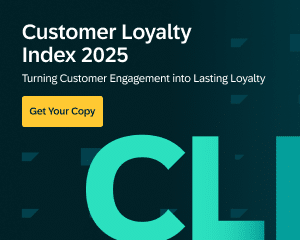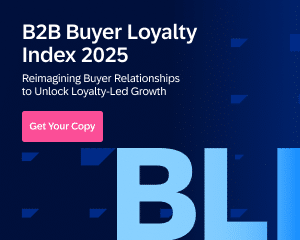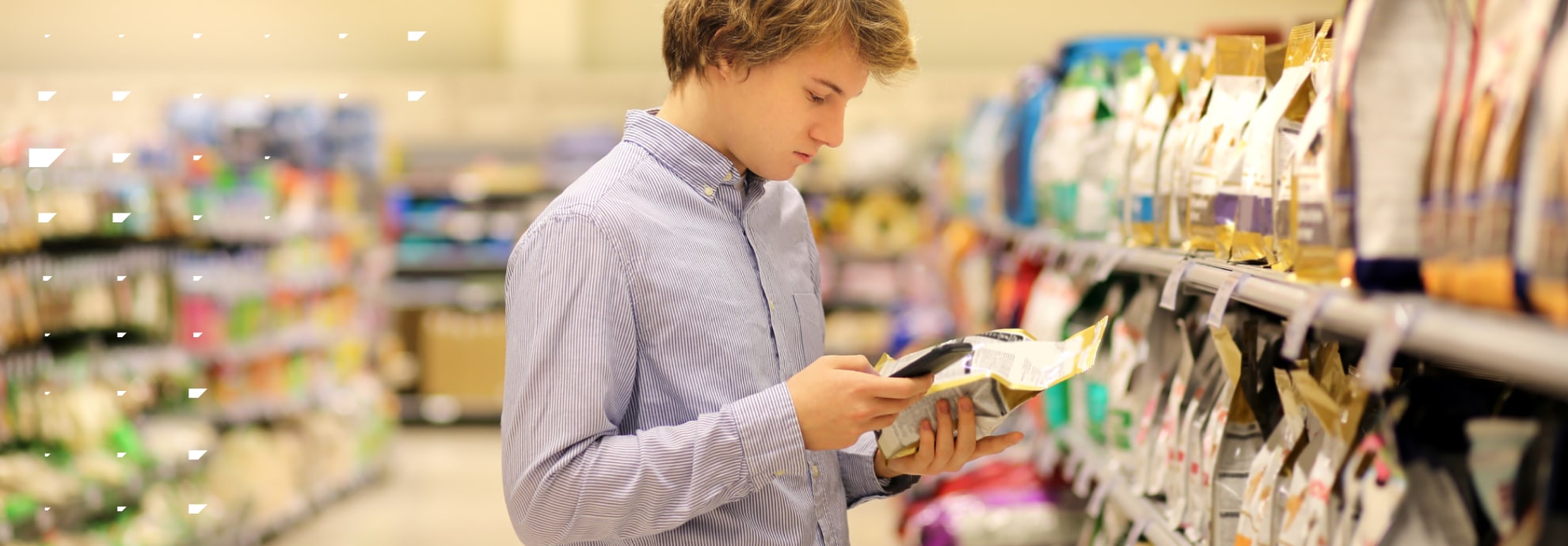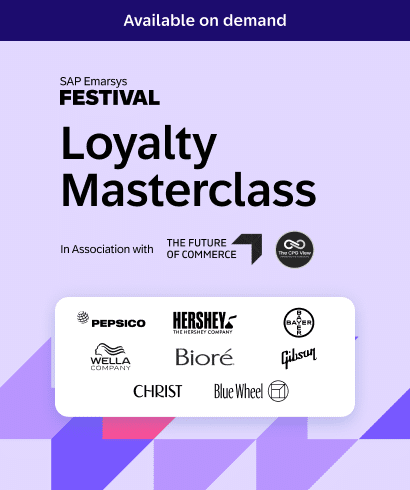It’s 2025—so when customers check a product online, they expect to see the same exact price in-store.
When they add an item to the cart on mobile, they expect to check out later on desktop.
When they visit your store, they expect to pick up where they left off online—whether that means accessing saved items, redeeming loyalty rewards, or checking real-time stock availability.
Brands that fail to unify digital and physical interactions risk losing customers to competitors that do. An effective omnichannel strategy ensures that every digital and physical touchpoint works together to drive loyalty and revenue growth.
As a marketer, delivering this level of personalization isn’t always easy. You might be dealing with:
- Fragmented data across channels, which makes creating a unified experience hard.
- Struggling to measure and attribute success across a customer’s journey.
- Navigating the fine line between personalization and privacy.
Bringing it all together can feel overwhelming. But with the right tools, you can do more than just meet customer expectations—you can turn seamless experiences into actual business results.
1. Integrate Customer Data for a Unified View
Customers don’t think in channels—but your data probably still does.
That’s the root of the problem. When customer data is scattered across your eCommerce platform, POS system, CRM, and mobile app, you lose the ability to deliver consistent, personalized experiences.
This disconnect leads to broken journeys: irrelevant emails, missed opportunities, and frustrating moments where customers feel unknown—despite having shopped with you multiple times.
A unified view brings everything together. By connecting your systems and consolidating data into a single profile, you can start to anticipate customer needs, tailor experiences in real time, and deliver truly seamless omnichannel journeys.
Here’s what this looks like in practice:
- A customer browses washing machines online and later receives an email featuring the exact model—plus relevant accessories and an in-store discount.
- Their preferences, loyalty status, and purchase history follow them from app to store to email—so every touchpoint feels connected.
- Marketing, sales, and service teams all work from the same customer view, eliminating conflicting messages and redundant outreach.
Example: AO.com
AO, one of the UK’s top appliance retailers, tackled this challenge head-on. They used SAP Emarsys to consolidate customer data across digital and physical touchpoints, including browsing behavior, purchase history, and engagement signals.
The result? Smarter segmentation and more relevant automation.
📈 Impact: AO’s data unification strategy led to a 45% increase in revenue from automated campaigns.
“By overlaying engagement and purchase data with demographic insights, we put customers through smarter, more relevant automation—allowing us to anticipate their needs and increase conversions.”
2. Use AI-powered Personalization to Drive Engagement
In 2025, marketing personalization is no longer a nice-to-have—it’s expected. If you want to drive engagement across your online and offline channels, you need to deliver on that expectation.
Customers want experiences that reflect their interests, behavior, and timing. If they browsed a product yesterday, they expect to see it again today. If they frequently shop in-store, they expect online promotions to match. And if something they want is out of stock, they want to know the second it’s back.
Delivering this level of personalization at scale requires more than guesswork or basic segmentation. It requires AI.
With the right AI tools, you can identify high-intent behaviors, predict what a customer wants next, and automate responses in real time—whether it’s a product recommendation, a restock alert, or a loyalty reward triggered at just the right moment.
What it looks like in practice
- A customer signs up for notifications on a sold-out item and gets an email the minute it’s restocked.
- Product suggestions adapt based on current browsing behavior, not last month’s.
- Email and SMS campaigns respond to each customer’s timing, channel, and preferences—without manual effort.
Example: Reformation
Sustainable fashion brand Reformation uses AI to predict demand, reduce waste, and keep high-intent shoppers engaged—even when inventory is low.
When popular items went out of stock, customers used to drop off. So Reformation introduced AI-powered waitlists that allowed shoppers to sign up for restock alerts. That simple change created a powerful feedback loop between customer demand and inventory strategy.
With SAP Emarsys, the brand:
- Identified high-intent shoppers and created automated waitlists
- Sent personalized restock notifications based on shopper behavior
- Extended personalization from online to in-store, so customers saw relevant offers wherever they shopped
📈 Impact: Reformation increased conversions, reduced lost sales, and strengthened customer loyalty—turning out-of-stock into an opportunity.
“We're continuing to move away from the batch-and-blast methodology towards more personalized tactics to be able to serve the right message, at the right time.”
3. Implement a Connected Loyalty Program
Loyalty can’t live in a silo.
If your program only works online—or only in-store—it’s not doing its job. Today’s customers expect their loyalty status, points, and perks to follow them wherever they shop. When that doesn’t happen, it creates friction—and breaks trust.
A connected loyalty program ties every touchpoint together, making it easy for customers to earn, redeem, and engage across e-commerce, mobile, and physical retail. And when you add personalization into the mix? You turn loyalty into a true growth driver.
Here’s what this looks like in practice:
- Customers check their points, rewards, and tier status from their phone while browsing in-store.
- Loyalty perks are personalized based on purchase history, frequency, or location.
- In-store staff can identify and reward top-tier members with exclusive offers or early access.
Example: City Beach
City Beach, an Australian fashion and lifestyle brand, transformed its loyalty program from a basic points system into a fully integrated, omnichannel experience.
Customers could:
- Earn and redeem points seamlessly across e-commerce, mobile, and physical stores
- Access real-time rewards and offers via mobile wallet integration
- Receive targeted loyalty campaigns powered by AI and tailored to their behavior
This approach made loyalty feel frictionless and rewarding—wherever the customer showed up.
📈 Impact: Within a year, 40% of active customers had joined the program, and City Beach saw a 10% boost in conversion rates.
By simplifying the experience and meeting customers where they are, City Beach turned casual shoppers into loyal brand advocates.
4. Enable Real-Time Inventory Visibility Across Channels
Nothing frustrates a customer faster than “out of stock.”
Especially when the website said otherwise.
When shoppers can’t trust your inventory across channels—or worse, can’t see it at all—they’re more likely to abandon their journey or go elsewhere. But when your systems are connected and inventory data is accurate in real time, you give customers the confidence to buy and the flexibility to choose how.
Whether it’s picking up in-store, shipping from a nearby location, or grabbing the last item before someone else does—real-time inventory visibility turns your supply chain into a competitive advantage.
What it looks like in practice
- Customers can check stock availability at their local store before leaving home.
- Automated campaigns promote low-stock urgency (“Only 2 left!”) or restock alerts.
- If a warehouse is out, systems offer alternatives like ship-from-store or in-store pickup.
Example: Aldo
Aldo, the global fashion footwear and accessories brand, wanted to eliminate friction between digital and physical shopping. Disconnected systems were holding them back—inventory status wasn’t synced across channels, and customers were left in the dark.
By integrating SAP Emarsys with their e-commerce and operations platforms, Aldo unified product data, customer behavior, and inventory signals. That made it possible to launch smarter, more relevant campaigns.
Their team could:
- Promote items based on real-time local availability
- Enable seamless fulfillment options like click-and-collect
- Ensure messaging matched what was actually in stock
📈 Impact: This connected approach reduced missed opportunities, improved customer trust, and helped Aldo align marketing with real-time operational data.
5. Use Mobile to Bridge the Online–Offline Gap
Your customer’s most powerful shopping tool is already in their pocket.
Mobile isn’t just another channel—it’s the glue that connects everything else. Whether they’re browsing on the go, scanning a QR code in-store, or redeeming loyalty rewards at checkout, mobile helps customers move fluidly between digital and physical experiences.
It’s also where timing, context, and personalization come together. When done right, mobile becomes your frontline for engagement, re-engagement, and in-the-moment conversions.
What it looks like in practice
- Customers receive a personalized SMS with an in-store promo code just as they walk past a nearby location.
- Mobile wallet passes hold digital loyalty cards, rewards, and offers that update in real time.
- Push notifications remind customers of abandoned carts, restocked items, or events at their favorite store.
Example: Love, Bonito
Women’s fashion brand Love, Bonito used mobile marketing to unify its customer experience across channels. As the brand scaled across Asia, it leaned into SMS and mobile engagement to stay close to customers wherever they shopped.
Using SAP Emarsys, they:
- Delivered time-sensitive SMS campaigns tailored to customer behavior
- Increased open and click-through rates compared to traditional email
- Reinforced promotions with mobile-friendly loyalty and product content
📈 Impact: Mobile messaging gave Love, Bonito a direct line to customers, improving campaign performance while strengthening the link between online discovery and in-store conversion.







